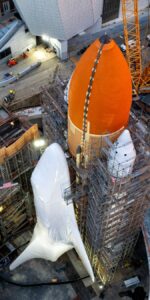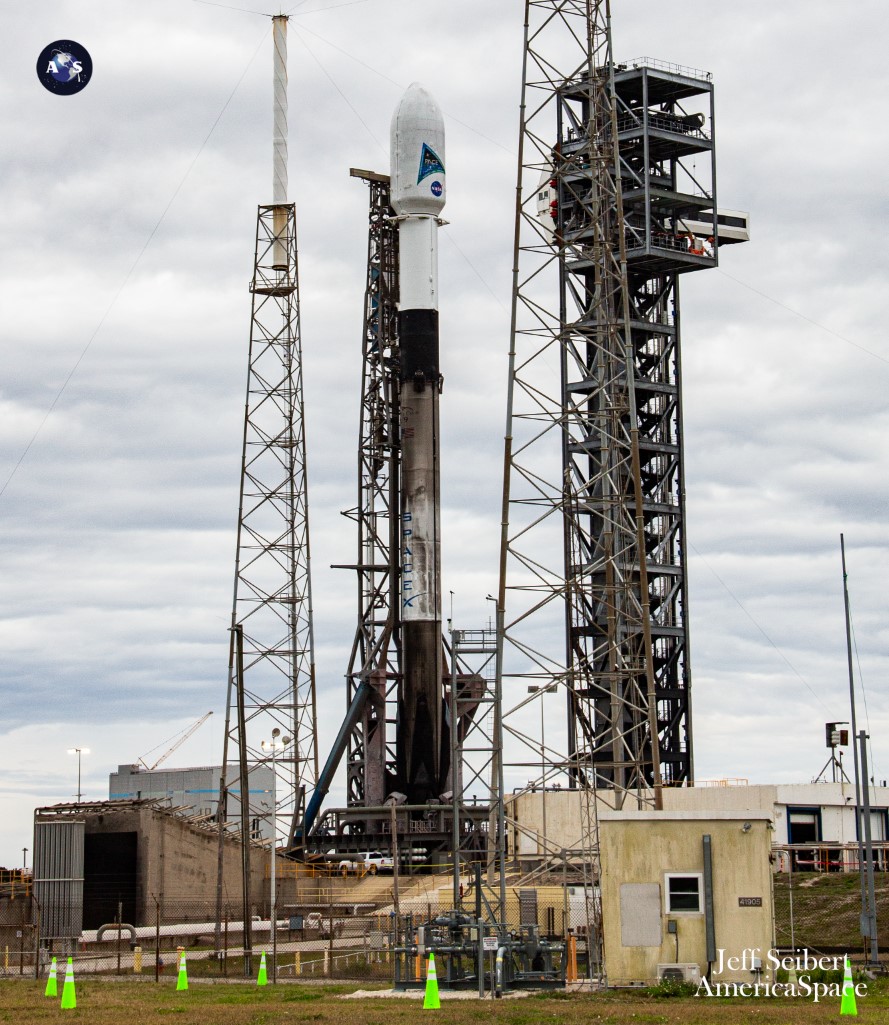
After a busy January which saw a personal-best-beating ten missions, and a launchless opening week of February, SpaceX last night stood down from two Falcon 9 flights on the East and West Coasts of the United States due to unfavorable weather conditions. Higher-than-allowable ground winds on the Space Coast prevented critical pre-launch checkouts and forced the second consecutive day of delay for NASA’s $805 million Plankton, Aerosol, Cloud, Ocean Ecosystem (PACE) mission, whilst a Starlink-laden Falcon 9 poised on the West Coast also succumbed to poor weather.
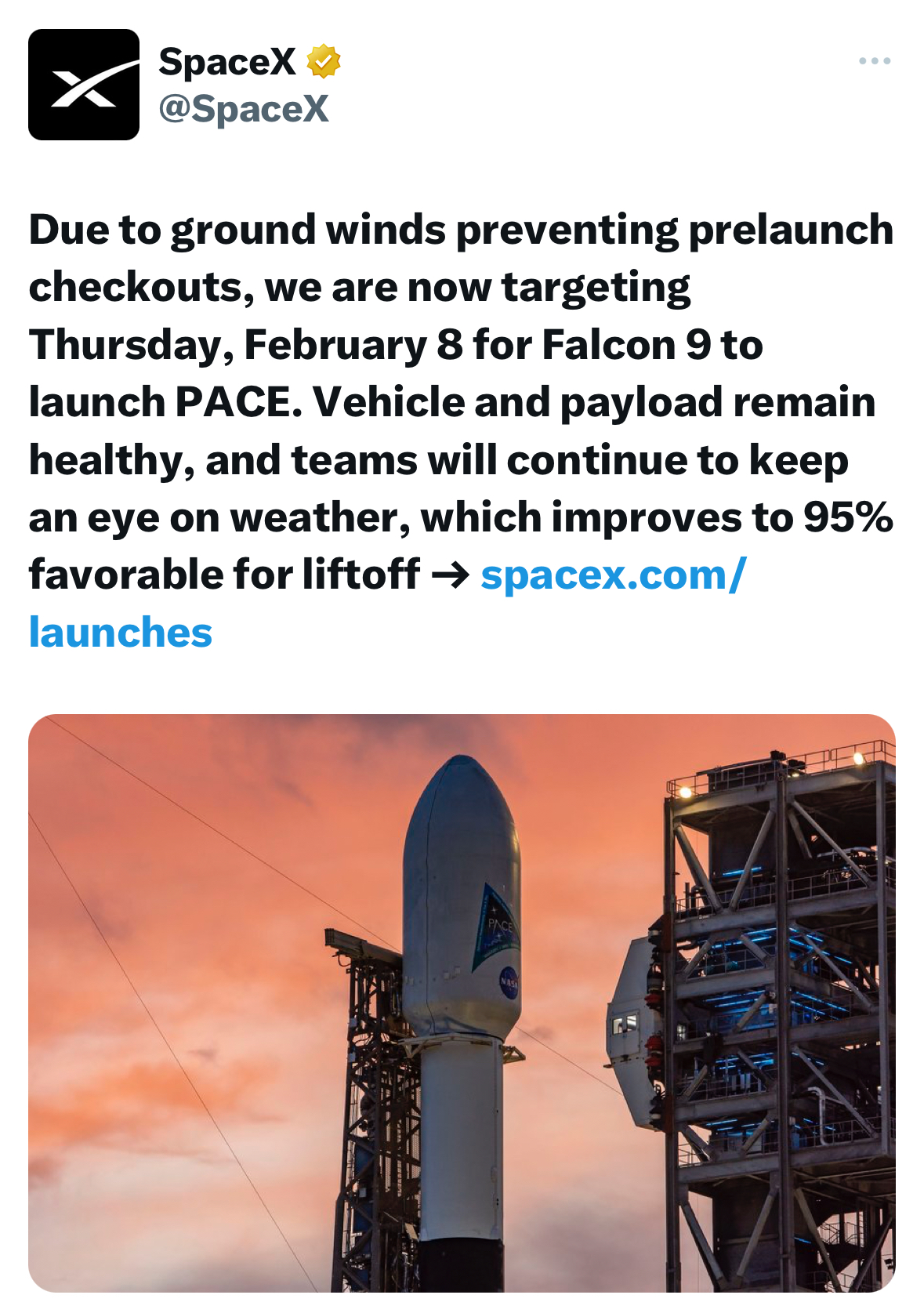
Both missions will now fly no earlier than tonight, with Starlink realigned to a suite of backup launch opportunities slated to begin at 5:17 p.m. PST Wednesday and PACE teams aiming for a near-instantaneous T-0 a little more than five hours later at 1:33 a.m. EST Thursday. They will mark the first pair of SpaceX flights in February, kicking off a busy few weeks which are also expected to see the 12:57 a.m. EST Valentine’s Day launch of Intuitive Machines’ IM-1 spacecraft to alight at the south pole of the Moon as part of NASA’s Commercial Lunar Payload Services (CLPS) program and later in the month the four-person Crew-8 team of astronauts and cosmonauts for their half-year stay aboard the International Space Station (ISS).
Liftoff of PACE was originally scheduled for 1:33 a.m. EST Tuesday, but with weather hovering no higher than 50-50 favorability, NASA and SpaceX teams opted late Monday to call off the first launch attempt and refocus on Wednesday instead. SpaceX also tweeted on X that high winds at the Cape’s Landing Zone (LZ)-1, where B1081 was set to make a solid-ground touchdown, were also unfavorable.
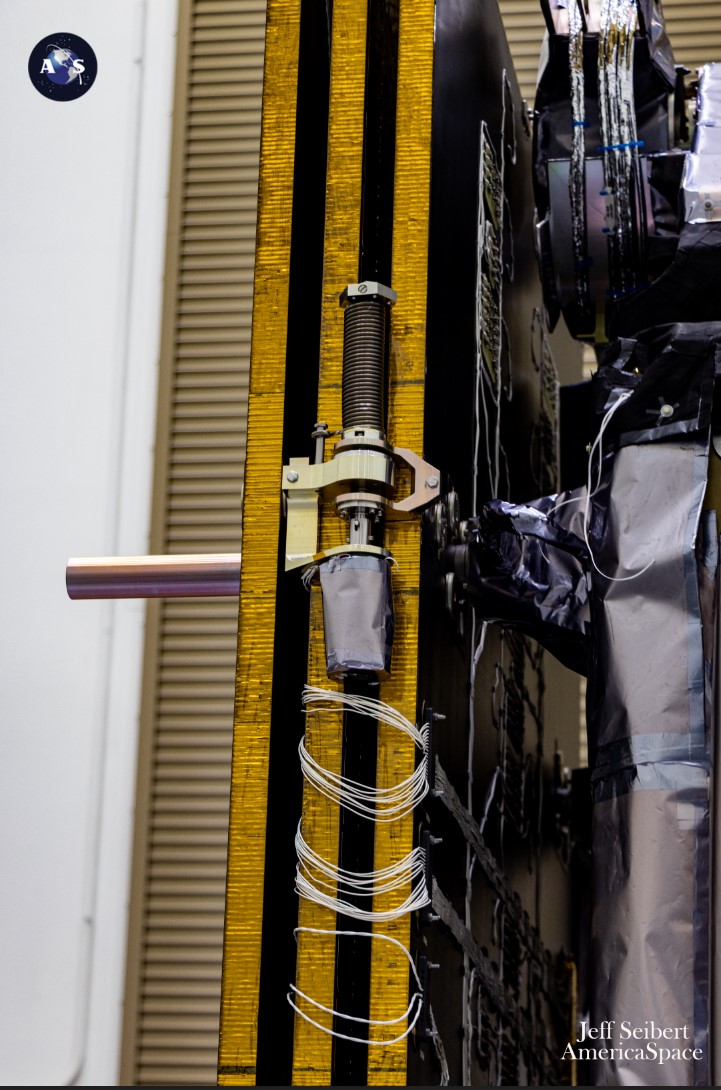
Yet hopes of flying at the same time—a near-instantaneous 90 seconds, with teams aiming for the middle of the “window” and leaving the second half available to accommodate potential Collision Avoidance (COLA) considerations—early Wednesday also came to nought. “Due to ground winds preventing pre-launch checkouts, we are now targeting Thursday, 8 February for Falcon 9 to launch PACE,” SpaceX tweeted on X, with an expectation that tomorrow’s weather should improve to 95-percent-favorable.
“By Wednesday, the Space Coast will finally see some relief from the high winds as high pressure slides into the Southeastern U.S.,” noted the 45th Weather Squadron at Patrick Space Force Base in a Tuesday afternoon update. “Winds will continue to decrease and veer from the north to the northeast as the day progresses and dry air in the mid and upper levels will cap off low-level clouds coming off the Atlantic.
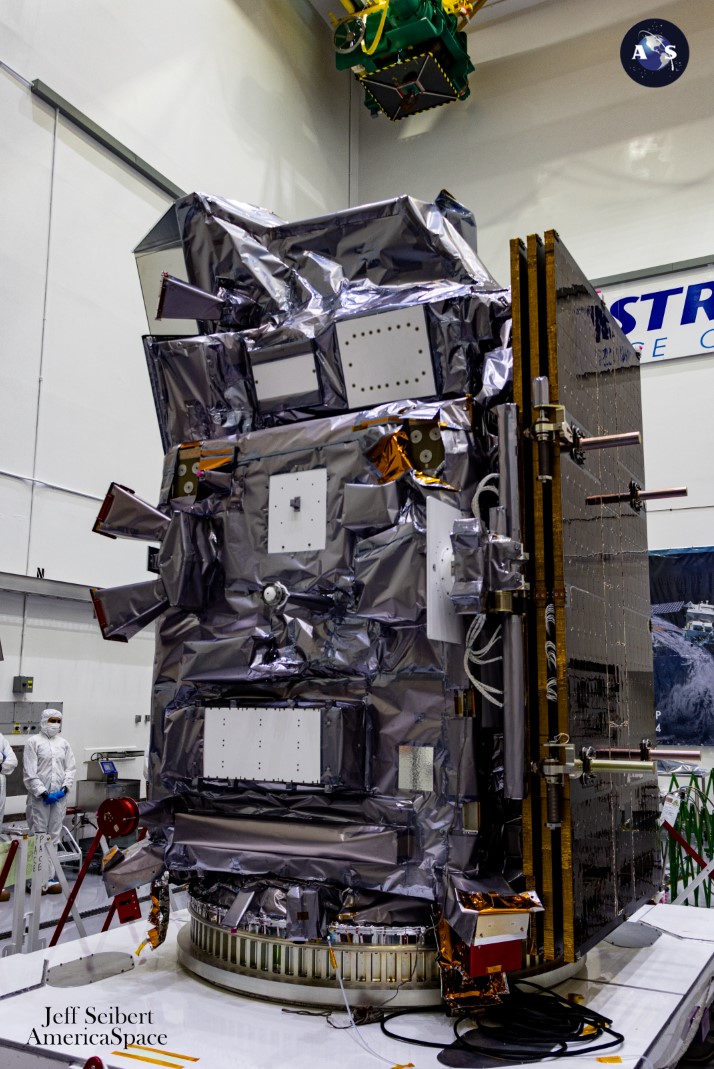
“Weather conditions look very favorable for the backup day,” it added, “with the only concern being a very low risk of a Cumulus Cloud Rule violation.”
Launching PACE is the four-times-flown B1081 booster core, which entered service last August to deliver Dragon Endurance and her Crew-7 quartet of NASA astronaut Jasmin Moghbeli, Denmark’s Andreas Mogensen of the European Space Agency (ESA), Satoshi Furukawa of the Japan Aerospace Exploration Agency (JAXA) and Russian cosmonaut Konstantin Borisov to the International Space Station (ISS), where they currently reside. Two additional launches of B1081 last November and December delivered SpaceX’s CRS-29 Cargo Dragon for a month-long research stay at the space station and a 23-strong batch of Starlink low-orbiting internet communications satellites.
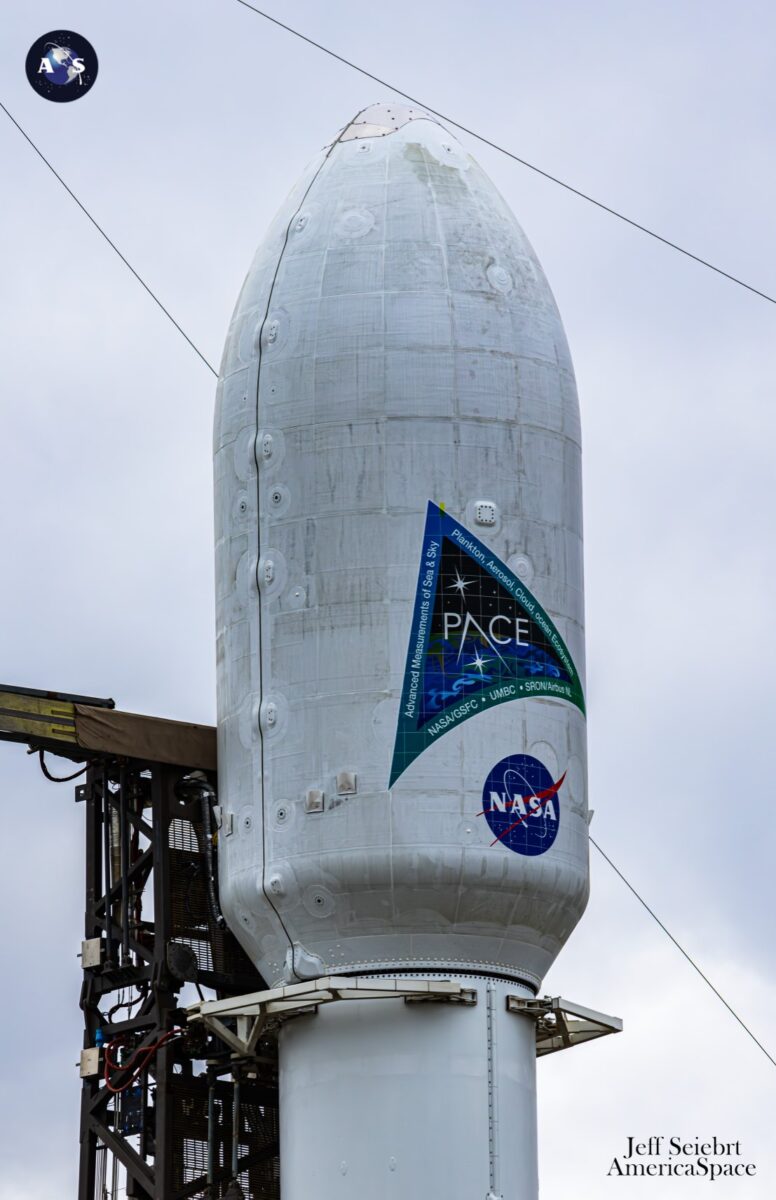
Assuming an on-time launch from storied Space Launch Complex (SLC)-40 at Cape Canaveral Space Force Station, Fla., at 1:33 a.m. EST Thursday, B1081 will power the stack for opening 2.5 minutes of ascent, before returning to alight—for the third time in her four-mission career—on solid ground at the Cape’s Landing Zone (LZ)-1. Meanwhile, the Falcon 9’s second stage will execute a lengthy “burn” to deliver PACE into orbit, deploying the 3,750-pound (1,700-kilogram) spacecraft about 12 minutes and 22 seconds into the flight for insertion into near-polar orbit some 420 miles (675 kilometers) above Earth.
Originally slated to fly two years ago under an earlier nomenclature of “Pre-Aerosol Clouds and Ocean Ecosystem”, PACE is managed by NASA’s Goddard Space Flight Center (GSFC) in Greenbelt, Md. The mission utilizes three scientific instruments—a first-of-its-kind Ocean Color Instrument (OCI), built by GSFC, and a pair of multi-angle polarimeters furnished by the University of Maryland, Baltimore County (UMBC) and the Netherlands Institute for Space Research (SRON) and Airbus Defence and Space Netherlands—to afford global views of microscopic algae concentrations, known as “phytoplankton”, which occupy the sunlit upper part of the oceans and produce at least half of Earth’s oxygen and forming the base of the marine food chain, together with atmospheric aerosol content.
Quantifying phytoplankton levels, NASA explained, carries important implications for expanding human knowledge of the carbon cycle and tracking climatic variability and change over time. “Knowing more about global phytoplankton community composition will help us understand how living marine resources respond to a changing climate,” said Project Scientist Jeremy Werdell of GSFC. “With PACE, we will learn more about the role of marine phytoplankton in the global carbon cycle.”
SpaceX also announced its first Vandenberg mission of February in characteristically short order late Tuesday, targeting a 9:37 p.m. PST liftoff of the veteran B1071 booster from Space Launch Complex (SLC)-4E at the mountain-ringed West Coast launch base. Propellant loading of the Falcon 9 with densified liquid oxygen and a highly refined form of rocket-grade kerosene (known as “RP-1”) got briskly underway on schedule at T-35 minutes, despite forecast predicting only a 30-percent chance of acceptable weather at T-0.
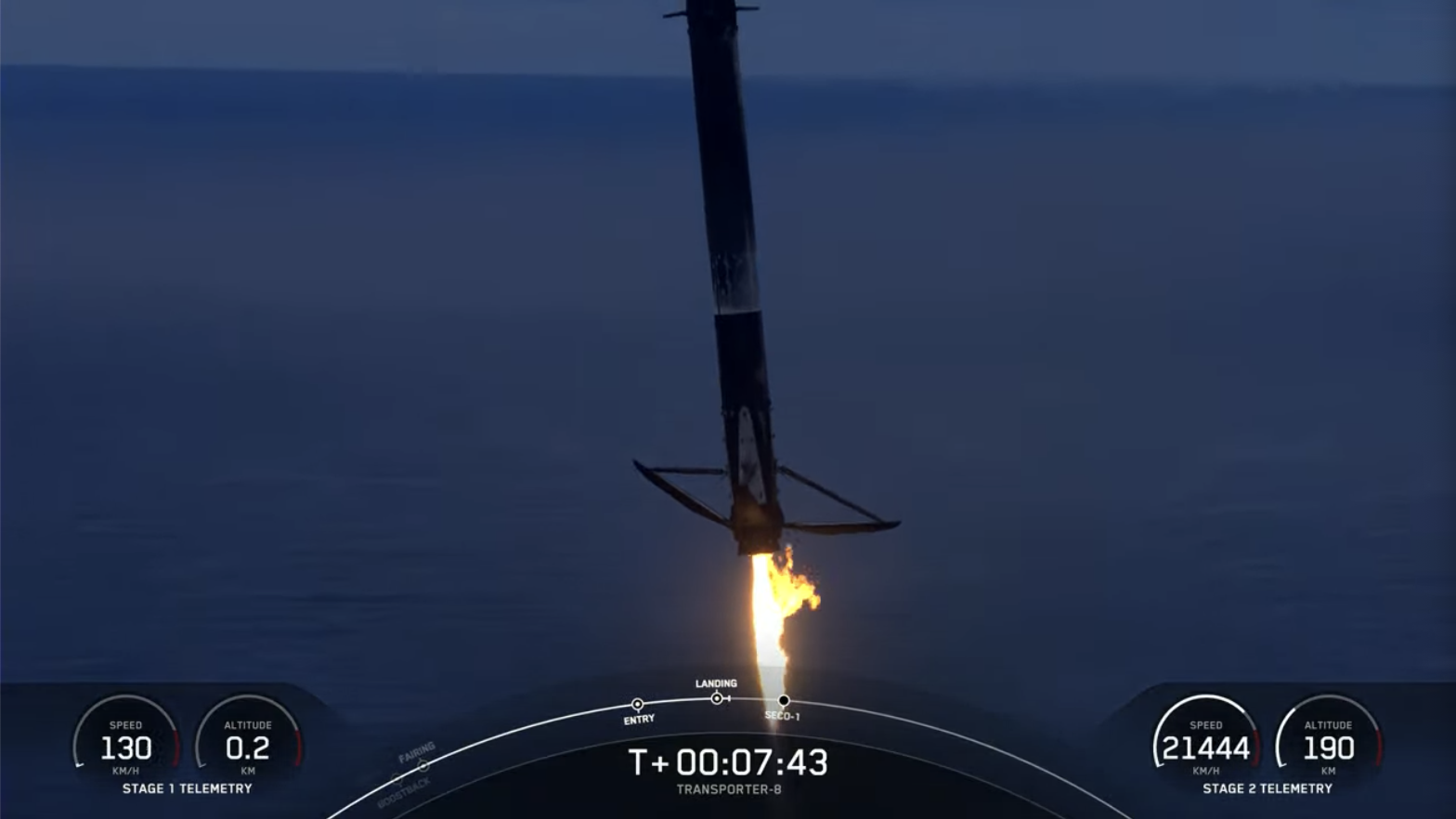
Finally, at 9:44 p.m. PST—after holding the countdown for several minutes—SpaceX officially stood down from Tuesday night’s launch attempt. “Next opportunity is no earlier than Wednesday, 7 February, pending weather conditions,” the Hawthorne, Calif.-headquartered organization tweeted, revealing on its website that the next available range of T-0 options begin at 5:17 p.m. PST tonight, just on the cusp of sunset.
Flying 22 Starlink low-orbiting internet communications satellites uphill on this mission will be none other than B1071, having long since cemented her credentials as a dedicated “Vandenberg Falcon” as she readies for her 14th launch in almost exactly two years. First flown in early February 2022, her opening pair of flights delivered two highly secretive payloads to orbit for the National Reconnaissance Office (NRO), followed by a pair of multi-customer Transporter missions, Germany’s SARah-1 radar-imaging surveillance satellite, seven Starlink missions—totaling more than 250 flat-packed satellites—and the NASA-led Surface Water and Ocean Topography (SWOT) mission, a collaborative scientific venture between the United States and France to investigate surface-water altitudes at centimeter-levels of precision.

Of note, her fifth flight in October 2022 set a new record jointly with the launch of Dragon Endurance and Crew-5 of only seven hours and ten minutes between pairs of Falcon 9 missions. That record has since been twice-broken, firstly in March of 2023 and more recently in the final days of December. B1071 was also responsible for executing SpaceX’s 200th fully successful landing of a first-stage booster.




